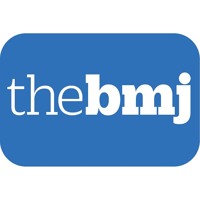A blog that publishes updates and open access scientific papers about allergy, asthma and immunology. Editor: Juan Carlos Ivancevich, MD. Specialist in Allergy & Immunology
December 7, 2014
December 5, 2014
Accuracy of the days’ supply and the number of refills allowed recorded in Québec prescription claims databases for inhaled corticosteroids
- Epidemiology
- Lucie Blais1,2,3,
- Anne Vilain1,
- Fatima-Zohra Kettani1,2,
- Amélie Forget1,2,
- Geneviève Lalonde1,
- Marie-France Beauchesne1,3,4,5,
- Francine M Ducharme6,7,
- Catherine Lemière1,2
2Hôpital du Sacré-Cœur de Montréal, Montréal, Québec, Canada
3Endowment Pharmaceutical Chair AstraZeneca in Respiratory Health, Montréal, Québec, Canada
4Pharmacy Department, Centre Hospitalier Universitaire de Sherbrooke, Sherbrooke, Québec, Canada
5Centre de Recherche Clinique Étienne-Le Bel, Centre Hospitalier Universitaire de Sherbrooke, Sherbrooke, Québec, Canada
6Clinical Research and Knowledge Transfer Unit on Childhood Asthma, Research Centre, CHU Sainte-Justine, Montréal, Canada
7Department of Pediatrics, University of Montréal, Montréal, Québec, Canada.
Correspondence to Dr Lucie Blais; lucie.blais@umontreal.ca
Objectives and hypotheses Adherence to inhaled corticosteroids (ICS) is a major issue in asthma. This study aimed to estimate the accuracy of the days’ supply and number of refills allowed, variables recorded in Québec claims databases and used to estimate adherence, and to develop correction factors, if required. We hypothesised that the accuracy of the days’ supply for ICS would be low whereas the accuracy of the number of refills allowed would be high.
Allergic diseases and asthma in the family predict the persistence and onset-age of asthma: a prospective cohort study
Research
Elina MS Paaso12, Maritta S Jaakkola1235, Aino K Rantala14, Timo T Hugg145 and Jouni JK Jaakkola1245*
Published: 27 November 2014
Abstract
Background
Family history of asthma and other allergic diseases have been linked to the risk of childhood asthma previously, but little is known about their effect on the age-of-onset and persistency of asthma until young adulthood.
Food allergy in small children carries a risk of essential fatty acid deficiency, as detected by elevated serum mead acid proportion of total fatty acids
Research
Marita Paassilta, Elina Kuusela, Matti Korppi, Riina Lemponen, Minna Kaila and Seppo T Nikkari
Abstract (provisional)
Background
Elevated serum Mead acid as a proportion of total fatty acids is an indirect marker of a deficiency of essential fatty acids (EFA). The aim of the study was to evaluate the symptoms and nutrition of food-allergic children with elevated or normal serum Mead acid.
December 3, 2014
Antibiotics in fetal and early life and subsequent childhood asthma: nationwide population based study with sibling analysis
BMJ 2014; 349 doi: http://dx.doi.org/10.1136/bmj.g6979 (Published 28 November 2014)Cite this as: BMJ 2014;349:g6979
- Anne K Örtqvist, doctoral candidate1,
- Cecilia Lundholm, statistician1,
- Helle Kieler, associate professor2,
- Jonas F Ludvigsson, professor13,
- Tove Fall, associate professor4,
- Weimin Ye, professor1,
- Catarina Almqvist, professor15
- Correspondence to: A K Örtqvist Anne.ortqvist@ki.se
- Accepted 30 October 2014
Subscribe to:
Posts (Atom)
